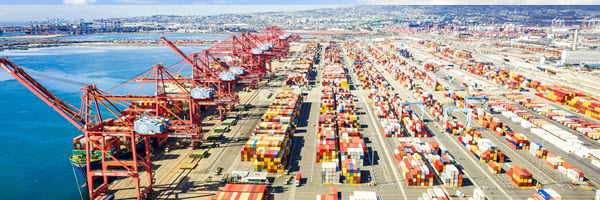- Finally, wireless earbuds that sound great, feel comfortable, and won't break the bank
- The Growing Threat of Ransomware-as-a-Service (RaaS) on Healthcare Infrastructure
- Pantheon of college football gets a Wi-Fi upgrade
- GPT-4o update gets recalled by OpenAI for being too agreeable
- The U.S. leads the world in AI (job) anxiety
Supply chain efficiency starts with securing port operations – Cisco Blogs

Anyone who still needed convincing that port modernization is vital got it during the COVID-19 pandemic. One image in particular stays with me. On November 19, 2021, more than 100 ships were waiting to dock at the Ports of Los Angeles and Long Beach. Some had been idling for two months, disrupting global supply chains and dirtying the air.
Now is a great time to modernize. In the U.S., for example, port authorities and terminal operators are eligible for funding through the Bipartisan Infrastructure Law. The U.S. Army Corps will receive $14 billion for ports, waterway, and coastal investments.
Picturing modern port operations
Here’s some of what’s possible with modern port networks:
- Faster vessel loading and unloading. Load straddle carriers, terminal tractors, reach stackers, cranes, and other handling vehicles with OCR scanners, HD cameras, and navigation systems—all connected to the terminal operations system (TOS) to give drivers real-time instructions.
- Safer working conditions with automated guided vehicles (AGV) or tele-remote operation of container-handling equipment.
- Improved equipment uptime, achieved by transmitting and analyzing real-time vehicle telemetry to predictive maintenance applications.
It takes an ultra-reliable wireless network
The networks supporting modern port operations need very high reliability and low latency. Wi-Fi is perfect to connect in-vehicle devices. But it wasn’t designed to connect moving vehicles to real-time applications—much less in large areas with tall container stacks. I’ve been working with a port authority whose Wi-Fi coverage was so spotty that rubber-tired gantry (RTG) operators drove to the non-operational areas after each assignment to pick up instructions for the next. Meanwhile, containers stayed still—and so did ships. Since that operator deployed Cisco Ultra-Reliable Wireless Backhaul, vehicles are always connected to the TOS so that drivers can see the next task from wherever they are. Productivity has skyrocketed.
Consider cybersecurity from the start
With better connectivity comes more opportunities… and more cyber threats. A reminder came in late February 2022, when a ransomware attack disrupted one of India’s largest container terminals, forcing it to divert vessels to other terminals. Just a few months earlier, suspected foreign government-backed hackers breached a computer network at the Port of Houston. Fortunately, early detection prevented the intruders to disrupt shipping operations.
Like traditional enterprise networks, port networks need effective perimeter security based on firewalls and malware detection, but don’t buy into the myth that perimeter security is enough! Ports and terminals are open environments, involving numerous contractors and some outdated technologies. To put the right defenses in place—such as patching vulnerable software and segmenting the network to prevent attacks from spreading to disrupt the entire operation—you need to first identify every connected asset. You also need to monitor industrial communications to detect abnormal behaviors and raise alerts before it’s too late.
This is exactly what Cisco Cyber Vision is designed to do. Built right into the industrial switches installed in cranes and vehicle, it automatically takes a precise inventory to show everything connected to your network. You can see right away, for example, if a contractor has connected an unauthorized wireless access point that could give an attacker a foothold. Cyber Vision also calculates a risk score for each asset so that you know what to fix to reduce the attack surface and keep cargo moving. This visibility is shared with your IT security tools so that you can create and enforce policies restricting which assets can talk to each other. (Not a quayside camera and a database, for instance.)
Come see our port security solution in action at “Hack the Port 22,” March 21-25, 2022
We’ll be demonstrating how to use Cyber Vision to secure port operations at Hack the Port 22, a cybersecurity event put on by Maryland Innovation and Security Institute (MISI) and DreamPort, inspired by U.S. Cyber Command. This year’s event will be held virtually and in person at the Greater Ft. Lauderdale Convention Center. I invite you to tune into my presentation on Monday, March 21, Wireless at a Port, is it Magic, Science, or a Mystery? If you attend in person, please introduce yourself!
Learn more
Share:

